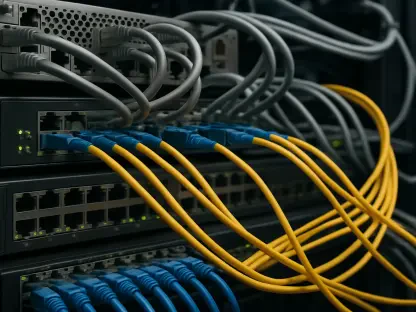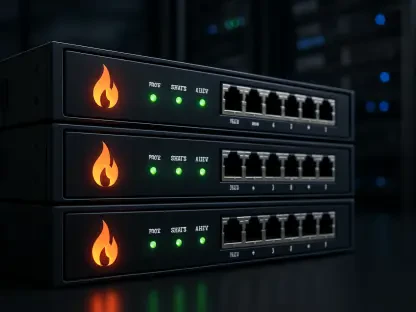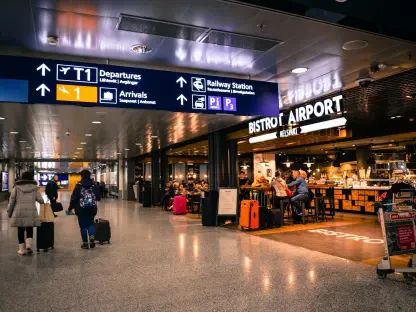In an era where digital transformation is redefining industries, Deutsche Telekom (DT) has embarked on an ambitious journey to reshape its infrastructure. With a strategic plan to transition more than 70% of its network technology (NT) and IT workloads to the cloud by 2027, DT embraces both private and public cloud solutions. This monumental shift is not merely about cutting costs; rather, it is a bold step toward achieving “generationless” network functionalities. By eliminating the need for complete hardware upgrades with each technological generation, DT aspires to seamlessly update its services without causing disruptions. Such a strategy underscores a broader movement in the telecom sector towards embracing scalability, autonomy, and AI-driven efficiencies. The implementation of autonomous networks leveraging data analytics and artificial intelligence encapsulates this futuristic vision. DT’s collaboration with Google Cloud on AI-enhanced Radio Access Network (RAN) monitoring exemplifies the company’s commitment to innovation, even as it navigates numerous technical and regulatory challenges.
Balancing Private and Public Cloud Infrastructure
The strategy to advance cloud adoption involves a nuanced balance between private and public cloud solutions, each serving distinct roles within DT’s ecosystem. The private cloud, particularly the Telekom Container-as-a-Service (T-CaaS), hosts critical network-specific applications, such as the 5G cores. This platform demonstrates DT’s focus on retaining control and flexibility over its core network functionalities, crucial for maintaining its competitive edge in a rapidly evolving telecom landscape. On the other hand, the public cloud facilitates select IT workloads, benefiting from scalability and agility that public platforms offer. However, the transition is fraught with challenges. The cost-effectiveness of leveraging the public cloud for network tasks is tempered by technical complexities and regional sovereignty requirements. Regulatory frameworks governing data privacy and national sovereignty present formidable obstacles, compelling DT to meticulously assess how much of its operations can be migrated without compromising security.
The decision to maintain a hybrid cloud approach enables DT to harness the strengths of both private and public clouds, tailoring solutions that best meet its operational needs. This flexibility is vital to ensure resilience and adaptability amidst fast-paced technological advancements and market demands. Moreover, embracing a multi-cloud strategy aligns with DT’s ambition to foster innovation through collaboration with cloud leaders like Google Cloud. Applying advanced AI capabilities to optimize network performance signifies DT’s dedication to pioneering solutions that anticipate future industry trends. By strategically leveraging cloud-based resources, DT positions itself at the forefront of telecom innovation, ready to unlock new levels of operational excellence and customer satisfaction.
Transforming Telecom Through AI and Automation
Central to DT’s cloud shift is the transformative potential of AI and automation in telecom operations. Artificial intelligence stands poised to revolutionize how telecom companies manage and monitor networks, offering unprecedented levels of efficiency and reliability. DT’s collaboration with Google Cloud on RAN monitoring signifies a leap toward self-optimizing networks, driven by data insights and AI tools. These advanced systems promise to detect anomalies and optimize network performance in real-time, significantly reducing the need for human intervention. Automation diminishes operational burdens by streamlining processes and liberating resources that can be redirected towards innovation. The self-sufficient network envisaged by DT would rely on data-driven operational decisions, reducing downtimes and enhancing the user experience. As DT pursues these technological advancements, it confronts critical challenges related to integration and deployment. Implementing AI solutions on a large scale entails navigating complex technical hurdles and workforce training initiatives. Nevertheless, with telecom operators worldwide eyeing similar transformations, DT’s proactive stance could yield significant competitive advantages.
Leveraging AI and automation aligns with broader digitalization trends within the telecom industry, where companies seek to boost operational efficiency and customer engagement. DT’s comprehensive approach to digital transformation through cloud adoption embarks the organization on a path of continuous evolution. Fostering a culture that encourages forward-thinking and embracing cutting-edge technologies is crucial for long-term success. Deutsche Telekom’s endeavor signifies a transformative era, where dynamic networks meet the ever-increasing demand for rapid connectivity and enhanced service quality. The path ahead, while complex, beckons with opportunities to redefine industry paradigms and bolster growth potential. Greater automation, augmented by real-time analytics, facilitates a shift from reactive to proactive network management, promising to enhance both service delivery and customer satisfaction dramatically. As DT navigates this exciting transformation, the company sets a roadmap for a future where telecom networks operate autonomously and efficiently.
A Cloud-Powered Telecom Future
In today’s world, where digital transformation is radically altering industries, Deutsche Telekom (DT) is embarking on an ambitious journey to modernize its infrastructure. They have put forth a strategic initiative to migrate over 70% of their network technology and IT workloads to the cloud by 2027, using both private and public cloud solutions. This significant change isn’t just a cost-cutting measure; it’s a strategic move towards achieving “generationless” network capabilities. DT aims to update its services seamlessly without major hardware overhauls for every new technological advancement. This strategy highlights a larger trend in the telecom sector, showcasing increased scalability, independence, and AI-driven efficiencies. Implementing autonomous networks that harness data analytics and artificial intelligence is key to this vision. DT’s partnership with Google Cloud to enhance Radio Access Network (RAN) monitoring using AI showcases their dedication to innovation amidst the technical and regulatory hurdles they encounter.








